Indexed In
- Genamics JournalSeek
- Academic Keys
- JournalTOCs
- China National Knowledge Infrastructure (CNKI)
- Access to Global Online Research in Agriculture (AGORA)
- Centre for Agriculture and Biosciences International (CABI)
- RefSeek
- Directory of Research Journal Indexing (DRJI)
- Hamdard University
- EBSCO A-Z
- OCLC- WorldCat
- Scholarsteer
- SWB online catalog
- Publons
- Euro Pub
- Google Scholar
Useful Links
Share This Page
Journal Flyer

Open Access Journals
- Agri and Aquaculture
- Biochemistry
- Bioinformatics & Systems Biology
- Business & Management
- Chemistry
- Clinical Sciences
- Engineering
- Food & Nutrition
- General Science
- Genetics & Molecular Biology
- Immunology & Microbiology
- Medical Sciences
- Neuroscience & Psychology
- Nursing & Health Care
- Pharmaceutical Sciences
Research Article - (2019) Volume 10, Issue 10
The Effect of Microwave Heating of Pandanus Leaves with Vacuum Dried Non-Aromatic Milled Rice on Consumer Acceptability of Cooked Rice
Vasanthiny Jeevaratnam* and N DharmasenaReceived: 16-May-2019 Published: 30-Jul-2019, DOI: 10.35248/2157-7110.19.10.809
Abstract
The aroma of cooked rice is contributed mainly by the compound 2-acetyl-1-pyrroline (2-AP) and it is also found in aromatic Pandanus leaves (Pandanus amaryllifolius). Therefore, this experiment was conducted to investigate a physical mechanism of transferring 2-AP from Pandanus leaves to non-aromatic polished rice. Milled Samba rice (medium/ bold) grains were vacuum dried for 24 hours to remove moisture and develop a porous structure on the grain. Then the rice samples were mixed with Pandanus leaves and microwaved for predetermined times in sealed bags to 65°C to explode oil glands and release 2-AP. After three weeks of chemical exchange time in bags, the consumer acceptability was tested based on preference. The results revealed that the consumer acceptability of rice could be significantly increased with appropriate microwave heating time. Data has shown that the mean acceptability rank value of 3.47 with 45 minutes microwaving (about 65°C) against the rank mean of 1.4 for the control in a five-point hedonic test. However, the increase of microwaving time above the optimum level produced an unpleasant aroma in rice and decreased the acceptability. Therefore, this physical treatment could be used to increase the palatability and acceptability of non-aromatic rice.Keywords
2-acetyl-1-pyrroline; Vacuum drying; Pandanus leaves; Microwave heating; Rice aroma
Introduction
Rice (Oryza sativa L.) is consumed as a staple food in half of the population in the world due to its nutrients, texture, and aroma. Aromatic rice, such as Basmati rice and Jasmine rice [1] is very popular in Asia and has gained wide acceptance in most countries [2]. The aroma of cooked rice is contributed by a mixture of several compounds [3] in which 2-acetyl-1-pyrroline (2-AP) has been reported as the major compound that is significantly responsible for the characteristic aroma of cooked rice [4]. However, this highly volatile compound is unstable and easy to lose during the cooking and storage process.
Therefore, it is very challenging and impossible to keep cooked rice for long periods of time if the quality and physicochemical properties are to be maintained, especially its aroma [5]. The lack of scientific information has been acknowledged concerning how the phenomena take place during cooking and the mechanism corresponding to the absorption of 2-AP by 3 rice grains. One successful attempt was achieved by Laohakunjit and Kerdchoechuen [6], using 30% sorbitol-plasticized rice starch film containing 25% natural Pandan extract in order to increase the 2-AP of non-aromatic brown rice. However, this film coating could not prevent the loss of 2-AP during the storage of raw rice grains. In addition, Pandan leaves have also been used as a flavoring and a coloring agent for various foods, such as bakery products, sweets, ice cream, yogurt, drinks, and coconut jam.
Pandan leaves are a suitable source of 2-AP, and, therefore, Pandan leaves can be used in cooking of rice in order to enhance the flavor of cooked rice, particularly in increasing the concentration of 2-AP. The total yield and 2-AP concentration of Pandan leaf extracts were highly affected by differences in particle size and drying pre-treatment. The number of epidermal cells was disrupted by the grinding and drying processes, which can affect the papillae structure; a storage site of 2-AP molecules in Pandan leaves. In spite of the higher yield and 2-AP concentration achieved by Soxhlet extraction using hexane as a solvent when compared to SC-CO2, the extracts obtained by supercritical extraction were pure, without contaminants due to the high selectivity nature of SC-CO2 [7].
Pandan leaf may be explored as a viable source of potent natural antioxidants for the protection of vegetable oils from oxidation and for the exploitation in the food and nutraceutical industries. Most of the conventional thermal treatments such as hot-air drying, vacuum drying, sun drying, and freeze-drying result in low drying rates in the falling rate period which leads to undesirable thermal degradation of the finished products [8]. In addition to its long-time and environmentally dependent process, sun drying is not recommended from the hygienic point of view. They have also disadvantages like inconsistent quality standards, contamination problems, low energy efficiency and high costs which is not a desirable situation for the food industry [9]. Therefore, the objectives of the present work examined the feasibility of using microwave drying to dry Pandanus amaryllifolius efficiently to produce a high quality dried product with good aroma concentration and comparison of different drying time to express the microwave drying acceptability of Pandanus leaves with the most suitable drying time [10].
Materials and Methods
Observation trial was done to check the time duration to keep rice with pandan leaves without exploding by volatile compounds released by pandan leaves. For that First air was removed from packed bag and leaves were added at 10 g/100 g of rice and were packed airtightly. Then it was kept at microwave oven (model: MC2846BLT) at randomly chosen temperature 45°C. Every 10 minutes bag was checked, with this temperature there were no explode happened. So the temperature was increased up to 55°C and 65°C same observation was done as it was done before for 45°C. At 65°C, after 30 minutes, the bag started to explode. Based on this pre-trial, 65°C with 30 minutes was chosen to keep rice samples with Pandan leaves for further experiments.
Polished rice (samba variety) was dried by vacuum drier at 70°C for about 24 hours. Once it takes out from vacuum drier, immediately rice divided by the weight of 100 g and was packed into 12 bags contains 100 g rice. Fresh leaves of Pandanus amaryllifolius were plucked, washed free of dirt, wiped with a cloth and sliced into small portions. Three 10 g leaf samples were added into 3 bags of rice and dried in an oven at 65°C for 30 minutes. After 30 minutes of drying, one set samples were kept in one time of microwaving (T1) and next set of samples were kept 2 times in microwave oven (T2) and final set of samples were kept 3 times in microwave oven (T3). After finishing drying process samples were kept for about 3 weeks of time to give enough time to absorb the volatile compounds which are released from pandan leaves. After keeping 3 weeks of time, rice samples were cooked by using the normal cooking method Figures 1-6.
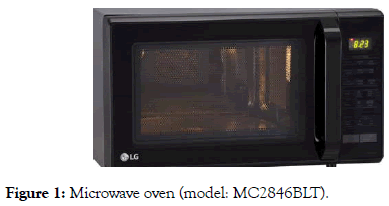
Figure 1. Microwave oven (model: MC2846BLT).
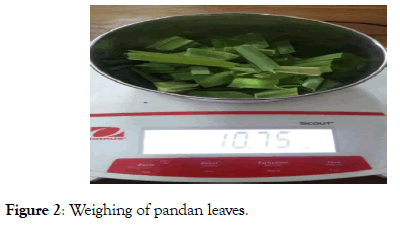
Figure 2. Weighing of pandan leaves.
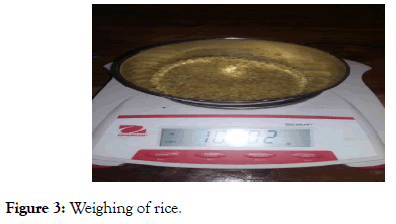
Figure 3. Weighing of rice.
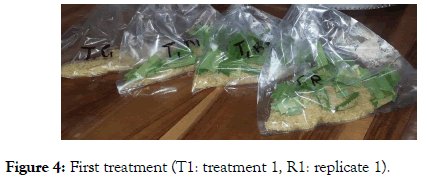
Figure 4. First treatment (T1: treatment 1, R1: replicate 1).
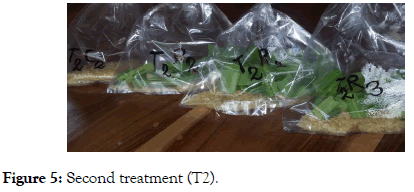
Figure 5. Second treatment (T2).
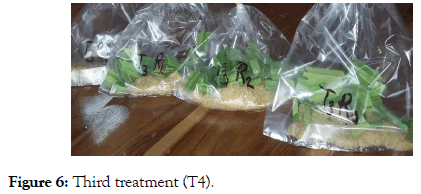
Figure 6. Third treatment (T4).
Sensory evaluation
Overall acceptability determinations of fresh leaves with rice were made using sensory evaluations (5 points ranking Friedman’s test). Fifteen numbers of individuals were considered for sensing the cooked non-aromatic rice with fresh leaves. Average of the scores obtained were calculated and analyzed. One non-aromatic variety of rice without pandan leaves were included as control samples
Statistical analysis
All data were reported as the non-parametric test and K related samples using SPSS 16 software package.
Result and Discussion
To investigate the effect of microwaving times, it was done for one time, two times and three times of microwaving for the regular interval with triplicates. After finishing drying process samples were kept for about 3 weeks of time. After keeping for 3 weeks, rice samples were cooked by using normal cooking method finally sensory evaluation was done.
Friedman’s test was done for cooked rice and data table was given bellow. The Friedman test is the non-parametric alternative to the one-way ANOVA with repeated measures. It is used to test for differences between groups when the dependent variable being measured is ordinal. It can also be used for continuous data that has violated the assumptions necessary to run the one-way ANOVA with repeated measures.
Table 1 shows the acceptability range of the selected 15 subjects in different treatments. There were 4 treatments done. Such as control, T1, T2 and T3. The timing allowed for the microwaving in each treatment is already mentioned. In each treatment, there were 3 replicates. So to do the analysis of Friedman ’ s test, average values of 3 replicates were taken in each treatment.
| Subjects (number of peoples chosen for sensory evaluation) | 1-time Microwaving T1 | 2 times Microwaving T2 | 3 times Microwaving T3 | |||||||||||||
|---|---|---|---|---|---|---|---|---|---|---|---|---|---|---|---|---|
| S. sNo. | R1 | R2 | R3 | Avg | R1 | R2 | R3 | Avg | R1 | R2 | R3 | Avg | R1 | R2 | R3 | Avg |
| 1 | 2 | 2 | 1 | 1.67 | 4 | 4 | 4 | 4 | 5 | 3 | 5 | 4.33 | 2 | 1 | 2 | 1.67 |
| 2 | 1 | 2 | 1 | 1.33 | 4 | 4 | 3 | 3.67 | 5 | 4 | 5 | 4.67 | 2 | 2 | 2 | 2 |
| 3 | 2 | 4 | 2 | 2.67 | 5 | 4 | 5 | 4.67 | 4 | 4 | 4 | 4 | 1 | 3 | 1 | 1.67 |
| 4 | 1 | 3 | 3 | 2.33 | 3 | 2 | 2 | 2.33 | 5 | 3 | 4 | 4 | 3 | 3 | 3 | 3 |
| 5 | 1 | 2 | 1 | 1.33 | 4 | 5 | 4 | 4.33 | 3 | 3 | 3 | 3 | 2 | 2 | 2 | 2 |
| 6 | 1 | 1 | 3 | 1.67 | 3 | 5 | 4 | 4 | 3 | 2 | 3 | 2.67 | 1 | 2 | 1 | 1.33 |
| 7 | 2 | 2 | 2 | 2 | 5 | 5 | 5 | 5 | 2 | 2 | 3 | 2.33 | 3 | 3 | 3 | 3 |
| 8 | 1 | 2 | 5 | 2.67 | 5 | 4 | 4 | 4.33 | 4 | 4 | 4 | 4 | 3 | 3 | 2 | 2.67 |
| 9 | 2 | 2 | 4 | 2.67 | 4 | 2 | 4 | 3.33 | 5 | 4 | 3 | 4 | 3 | 4 | 4 | 3.67 |
| 10 | 1 | 3 | 1 | 1.67 | 4 | 3 | 3 | 3.33 | 5 | 5 | 5 | 5 | 2 | 2 | 2 | 2 |
| 11 | 1 | 3 | 3 | 2.33 | 3 | 2 | 3 | 2.67 | 4 | 3 | 2 | 3 | 1 | 3 | 1 | 1.67 |
| 12 | 1 | 2 | 1 | 1.33 | 4 | 4 | 4 | 4 | 4 | 4 | 4 | 4 | 2 | 2 | 3 | 2.33 |
| 13 | 2 | 2 | 4 | 2.67 | 5 | 4 | 5 | 4.67 | 5 | 5 | 3 | 4.33 | 2 | 3 | 2 | 2.33 |
| 14 | 1 | 1 | 1 | 1 | 5 | 3 | 3 | 3.67 | 4 | 3 | 4 | 3.67 | 1 | 2 | 2 | 1.67 |
| 15 | 3 | 3 | 3 | 3 | 4 | 2 | 4 | 3.33 | 5 | 5 | 5 | 5 | 3 | 3 | 3 | 3 |
Table 1: Data got from 5 point rank method.
Here is the output from a Friedman’s test, which is analyzed by SPSS (Table 2).
| Ranks | |
|---|---|
| Control | Mean Rank |
| T1 | 1.40 |
| T2 | 3.30 |
| T3 | 3.47 |
Table 2: Output from SPSS.
A non-parametric test of differences among repeated measures was conducted and rendered a Chi-square value of 30.271 which was significant (p<0.01). As indicated previously, the entire table of mean ranks is included. When compared with the control samples, consumers were given the highest acceptability score for T1 and T2. Tables 3 and 4 show the mean rank of each treatment. According to those results, T2 was taken the highest mean rank (3.47) within 4 treatments. It means the microwaving for 2 times is giving higher acceptability among randomly selected subjects.
| Rank | Value of acceptability |
|---|---|
| 1 | Very low |
| 2 | Low |
| 3 | Medium |
| 4 | Good |
| 5 | Very good |
Table 3: 5 Point rank order.
| Test | Statistics |
|---|---|
| N | 15 |
| Chi-Square | 30.271 |
| df | 3 |
| Asymp. Sig. | 0 |
| Exact Sig. | 0 |
| Point Probability | 0 |
Table 4: Tested statistics output.
Samples which got the highest acceptability were kept in a microwave oven at 65ºC for 45 minutes for 3 weeks. After 3weeks again samples were allowed for microwaving at same conditions. When samples were kept 3 times for microwaving, rice samples started to develop an unpleasant smell. Because of this smell, the subjects were shown less interest in consuming cooked rice. Hence, considering the consumer acceptability, rice was kept 2 times in a microwave oven at similar condition, which is more preferable.
Conclusion
Hence, it can be concluded that in the case of acceptability of rice, which is allowed for microwaving with Pandanus (Pandanus amaryllifolius) leaves the giving different range of acceptability among the randomly selected 15 subjects. Drying the Pandanus (Pandanus amaryllifolius) leaves two times with rice by using a microwave oven at 65°C fo r 45 minutes was given higher preference among the selected peoples. We can use this timing of microwaving just to increase the amount of consuming rice by each and every individual successfully.
REFERENCES
- Wongpornchai S. Effects of drying methods and storage time on the aroma and milling quality of rice (Oryza sativa L.) cv. Khao Dawk Mali 105. Food Chemistry. 2004;87:407-414.
- Hashemi FG. Biochemical, genetic and molecular advances of fragrance characteristics in rice. Critical Rev Plant Sci. 2013;32:445-457.
- Riana W, John C, Michael W. Changes in volatile components of paddy, brown and white fragrant rice during storage. J Sci Food Agri. 1996;71(2):218-224.
- Buttery RG. Quantitative analysis of 2-acetyl-1-pyrroline in rice. J Agri Food Chem. 1986;34:112-114.
- Sirisoontaralak P, Noomhorm A. Changes to physicochemical properties and aroma of irradiated rice. J Stored Products Res. 2006;42:264-276.
- Laohakunjit N, Kerdchoechuen O. Aroma enrichment and the change during storage of non-aromatic milled rice coated with extracted natural flavor. Food Chemistry. 2007;101(1):339-344.
- Yahya FB. Extraction of aroma compound from Pandan leaf and use of the compound to enhance rice flavor, University of Birmingham. 2012.
- Mousa N, Farid M. Microwave vacuum drying of banana slices. Drying Technol. 2002;20:2055-2066.
- Soysal Y, Oztekin S. PH-Postharvest Technology: technical and economic performance of a tray dryer for medicinal and aromatic plants. J Agri Eng Res 2001;79:73-79.
- Lu J. Asymmetric allyltributylstannane addition to ketones catalyzed by chiral PYBOX-In (III) complex immobilized in ionic liquid. Tetrahedron letters. 2005;46:7435-7437.
Citation: Jeevaratnam V, Dharmasena N (2019) The Effect of Microwave Heating of Pandanus Leaves with Vacuum Dried Non-Aromatic Milled Rice on Consumer Acceptability of Cooked Rice. J Food Process Technol 10:809. doi: 10.35248/2157-7110.19.10.809
Copyright: © 2019 Jeevaratnam V, et al. This is an open-access article distributed under the terms of the Creative Commons Attribution License, which permits unrestricted use, distribution, and reproduction in any medium, provided the original author and source are credited.


